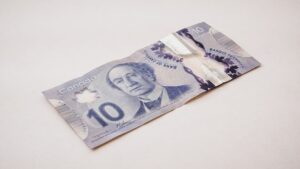Understanding the Forex Triangle Pattern: A Comprehensive Guide
The forex market is known for its volatility and unpredictability. Traders are constantly searching for patterns and indicators that can help them make informed trading decisions. One such pattern that has gained popularity among forex traders is the triangle pattern. In this comprehensive guide, we will explore what the triangle pattern is, how to identify it, and how to trade it effectively.
What is a Triangle Pattern?
A triangle pattern is a chart formation that occurs when the price of an asset consolidates between two converging trendlines. It is called a triangle pattern because it resembles a triangle, with the two trendlines representing the upper and lower sides of the triangle. The triangle pattern is considered a continuation pattern, which means that it suggests that the price will continue in the direction of the previous trend after the consolidation period.
Types of Triangle Patterns
There are three main types of triangle patterns: the symmetrical triangle, the ascending triangle, and the descending triangle.
1. Symmetrical Triangle: In a symmetrical triangle, the upper trendline and the lower trendline converge at equal angles. This suggests that the market is in a state of balance, with neither the bulls nor the bears in control. Traders often look for a breakout above the upper trendline or below the lower trendline to confirm a new trend.
2. Ascending Triangle: In an ascending triangle, the upper trendline is horizontal, while the lower trendline is ascending. This pattern indicates that the buyers are gaining strength and are likely to push the price higher. Traders often wait for a breakout above the upper trendline to enter a long position.
3. Descending Triangle: In a descending triangle, the lower trendline is horizontal, while the upper trendline is descending. This pattern indicates that the sellers are gaining strength and are likely to push the price lower. Traders often wait for a breakout below the lower trendline to enter a short position.
How to Identify a Triangle Pattern
Identifying a triangle pattern requires careful observation of the price action and the formation of the trendlines. Here are some key steps to identify a triangle pattern:
1. Draw the Trendlines: Identify at least two swing highs and two swing lows and draw a line connecting them. These lines should converge to form the upper and lower trendlines of the triangle pattern.
2. Confirm the Pattern: The price should bounce between the trendlines at least twice to confirm the triangle pattern. The more times the price touches the trendlines, the stronger the pattern becomes.
3. Measure the Height: Measure the height of the triangle pattern by subtracting the lowest point of the lower trendline from the highest point of the upper trendline. This measurement can provide an estimate of the potential price target once the breakout occurs.
Trading the Triangle Pattern
Trading the triangle pattern requires patience and a clear understanding of market dynamics. Here are some strategies to consider when trading the triangle pattern:
1. Wait for the Breakout: Traders often wait for a breakout above the upper trendline or below the lower trendline to enter a trade. This breakout confirms the continuation of the previous trend and provides a clear entry signal. However, it is essential to wait for a strong breakout with significant volume to avoid false signals.
2. Use Stop Loss Orders: Placing a stop loss order below the breakout point (for long positions) or above the breakout point (for short positions) can help limit potential losses if the breakout fails and the price reverses.
3. Target Potential Price Movements: The height of the triangle pattern can provide a target for the potential price movement after the breakout. Traders can calculate the target by adding the height to the breakout point (for ascending triangles) or subtracting the height from the breakout point (for descending triangles).
Conclusion
The forex triangle pattern is a powerful tool that can help traders identify potential continuation patterns and make informed trading decisions. By understanding the different types of triangle patterns, how to identify them, and how to trade them effectively, traders can improve their chances of success in the forex market. However, it is important to remember that no pattern or indicator is foolproof, and traders should always use proper risk management techniques to protect their capital.





